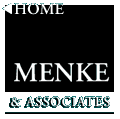|
THE MANAGEMENT ROUNDTABLE
The second planning phase of the PRO-Productivity System (tm) thus
engages the management team alone in a workshop. The very process of determining
how best to encourage greater employee involvement in concrete productivity
enhancement projects is used to illustrate and practice participatory decision
making. The product of the Roundtable is a kind of homework assignment for
the management group which grows out of the issues identified in exercises
on some or all of the following topics:
-
Identify the company's current Management Style. Exercises based upon
Likert's, MacGregor's & Ouchi's models from command and control to consensus
decision-making. Where do the company's managers fit on the scale from Ghengis
Khan to Mr. Rogers? How appropriate are the current habits of leadership?
Are job functions, decision-making authority and responsibility clearly
articulated? How do employees know they have succeeded? Design an ideal
management style that fits the potential of the business and the talents
and idiosyncrasies of its people.
-
Focus on the Cost Structure of the business. Where do the profits
really come from? How much potential does there appear to be for employees
to increase productivity? Identify the current level of employee
participation/autonomy/awareness of the cost structure. Do employees have
enough information to modify their behavior in search of higher profits?
Is there a need for employee education regarding basic financial principles
and the cost structure of this particular business? Design an ideal relevant
feedback system which would permit people to react quickly to significant
profit opportunities or cost overruns.
-
Focus on the Organizational Structure of the business: Does the current
structure facilitate or impede information flow and decision-making? Does
the company do strategic planning? Do employees work to a plan? Are there
different functional departments or operating divisions which present distinct
communication problems? How do they interact now? Is there too much insularity
and not enough mutual support? Do most employees speak English? How will
the productivity process deal with linguistic and cultural differences? Would
strategic business unit organization and accounting principles enhance
productivity? Design an ideal reporting and responsibility structure which
would facilitate efficient operations at the lowest cost.
-
Evaluate Compensation Techniques: Do current compensation structures
match responsibility and risk? What should the balance be between short-
and long-term compensation, between base compensation and performance-based
compensation. What is the realistic potential of the company's stock? Will
the amount of stock targeted for ESOP ownership constitute an inadequate,
appropriate, or excessive foundation for the productivity enhancement program?
Should the existing cash bonus system, if any, be integrated with the ESOP
such that some of the cash bonus is paid out to plan participants in the
form of tax-deductible "dividends" allocated according to the number of shares
in a participant's account? Design an ideal compensation scheme.
-
Explore Productivity Enhancement Techniques used by existing successful
ESOP companies as alternatives to consider: What level of employee involvement
should be targeted initially? Should communication be limited to top-down
education at first? What kind of bottom-up information channels exist now?
Could autonomous decision-making be forced downward in the organization?
Should it be? How should success be recognized and measured? Design an ideal
employee communications program that is consistent with the goals of the
plan.
A single day's workshop will not accomplish a change in corporate culture.
The Management Roundtable does, however, help management to identify the
company's current unconscious habits and explore alternatives which might
enhance long-term productivity. The experience of the Menke facilitator leading
the workshop provides perspective and serves as a catalyst to help the management
team focus on issues they have long recognized, but perhaps failed to articulate.
There is no magic in the system except that it provides a forum, a structure
for the people actually working in the company to take stock of their situation
in a systematic way. This kind of stock-taking is just as crucial to the
PRO-Productivity System (tm) as the financial kind of stock. The goal
of the Roundtable is to leave the management team with a pile of unfinished
planning tasks and a format for working them out during several ensuing weeks.
During the workout phase of the program, then, managers themselves may consider
whether any of their current habits contribute towards what Malcolm G. Putnam,
President of Oregon Steel, calls "the We-They Syndrome between management
and labor."15 They can experiment in developing effective group dynamics
among themselves, learn consensus-building skills and communication techniques,
and perhaps modify the subtle hurdles which could sabotage from the start
the message "We're all in this together."
The final objective of that long workout process is to establish the shape
of the employee productivity enhancement program: what are its proximate
and long-term goals. How should the company begin and how can it recognize
success? Recognizing that you get what you measure and reward, how should
the company's reporting and compensation systems be modified to encourage
productivity growth?
As an equally important objective, the workout period also gives managers
time to develop their own commitment to the employee participation process.
On rare occasion, the decision is made at this point to postpone further
employee involvement indefinitely. Unless and until managers are comfortable
with the selected employee participation techniques, the plan will start
out as someone else's pet project and probably finish as nobody's baby.
Back to the Index
Next Section: Involving All Employees

HOME |
ABOUT ESOPs |
OUR SERVICES |
OUR FIRM
TOMBSTONES |
CONTACT US
|

